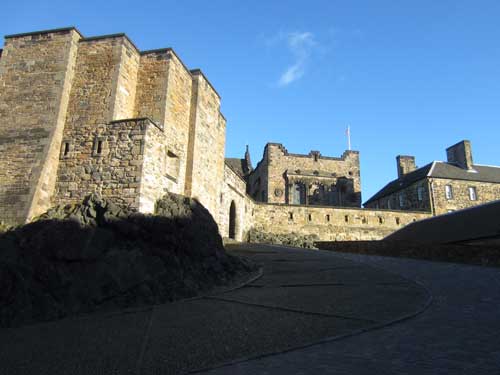We wove our way through the cemetery, stopping at some Harry Potter 'famous' sites such as the George Harriet School (aka Hogwarts), the tombstone of someone named William McGonagall (whose last name was used for one of the characters, Minerva McGonagall) and another of Thomas Riddell (aka the villain, Voldemort). Unfortunately I don't know the story very well so much of this was lost on me.
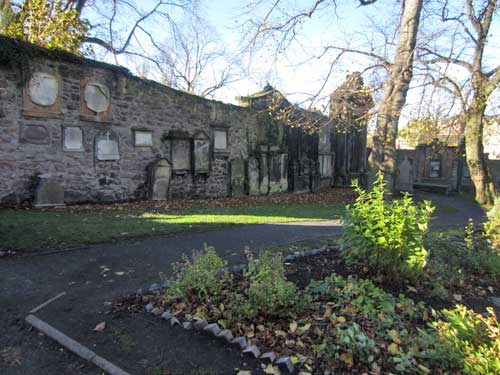
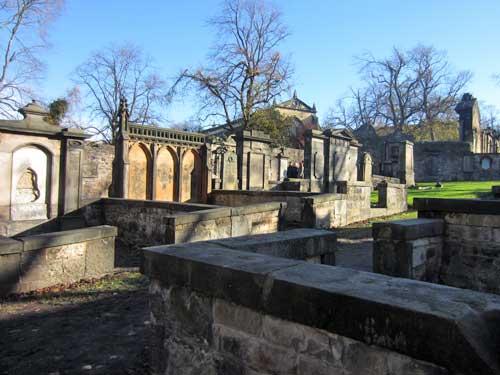
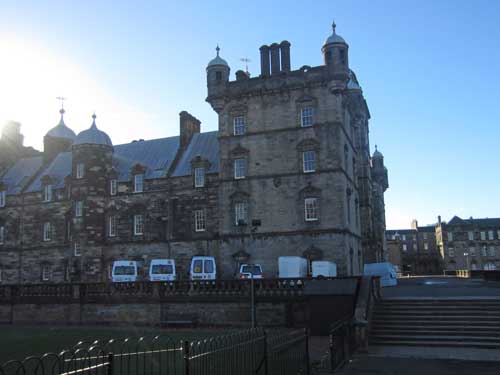
George Harriet was the king's goldsmith. He was extremely wealthy but also extremely generous. In 1659, he built a school for orphans and other children. It is now a very prestigious school but it still offers some scholarships for orphans.
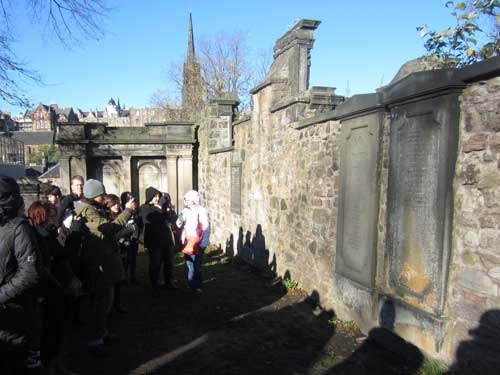
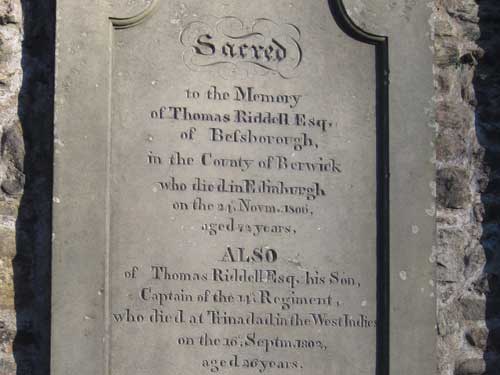
We then moved to the part of the Geyfriar's Kirkyard that was used as a prison. This is also where the Covenanters signed their infamous document that unfortunately got many of them hanged. One statistic says that 18,000 were killed from 1661-1680. 1,000 - 1,200 of them were held here for 5 months during winter. The were locked up in outside cells with no roof. Many died just from the weather alone. Others were tortured and eventually executed. They were given only water and four ounces of bread per day, and there were lots of strict (sadistic) rules. George "Bloody" Mackenzie was a guard.... and a very cruel man. His rules were: you couldn't huddle together for warmth; you can't move or speak... even while sleeping. The punishment for any offense was that they would shoot your neighbor. As a result, some prisoners even drowned here, unwilling to turn over to save themselves if they had fallen asleep face down in a heavy rain.
There were survivors of this imprisonment, but they were not destined to get a happy ending either. They were sent on a boat to Barbados, destined to be slaves... but the ship sank and they all died.
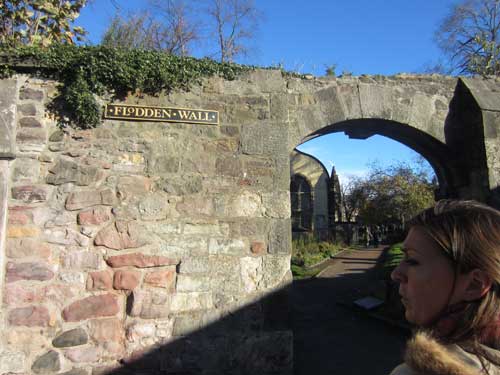
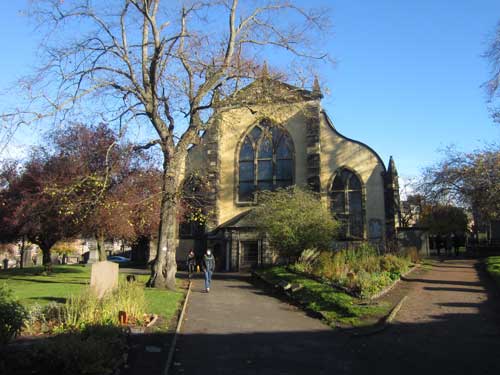
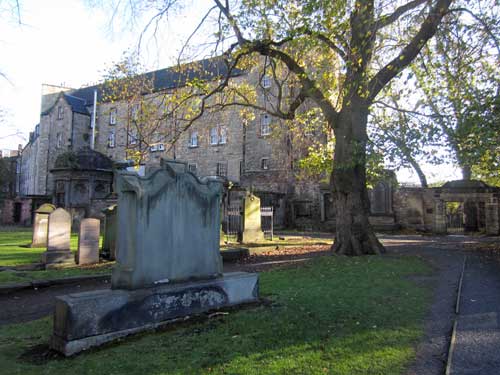
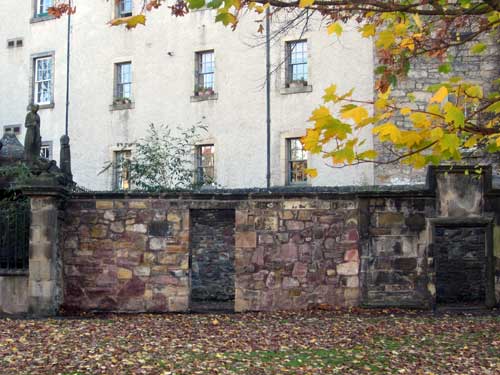
These are examples of the outdoor cells.
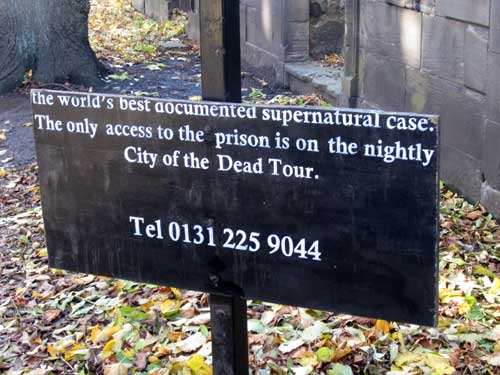
Darn... I'm going to miss this one!
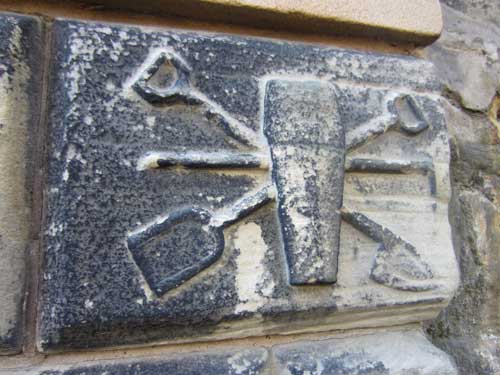
Tools of the burial trade??
In the early 1800's, Edinburgh's medical university was only given one to four cadavers per year... hardly enough for serious research. So they offered to buy bodies. This quickly led to the skyrocketing of grave robbing. Once those bodies were sufficiently looted, two Irishmen, William Burke and William Hare, came up with another way to get fresh bodies... by killing them themselves. Eventually their 11 month murder spree came to an end. Hare testified agains his parter and got away with all these horrible deeds, while Burke was hanged in 1829... and his body was used for medical research. The Anatomy Act of 1832 was then created requiring that the university could only accept donations before death and with a signed agreement.
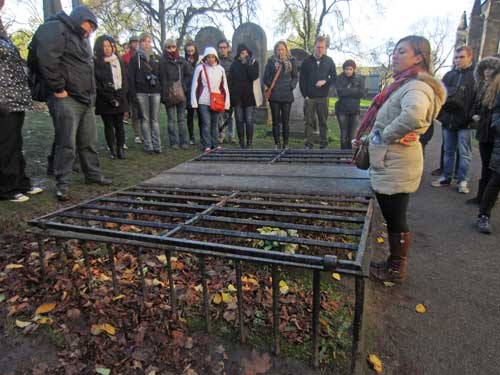
This cage in the ground is called a mort safe. Rich people people could buy a mausoleum and were secure from having their bodies stolen. Middle class people could rent this giant cage for two weeks (since that's about how long it took for a body to rot to the point that the university couldn't use it) which was buried deep enough that they couldn't be dug up. Poor folks, who couldn't afford either of these options, relied on relatives to take turns sitting next to the grave at night... thus working at night became known as "the graveyard shift".
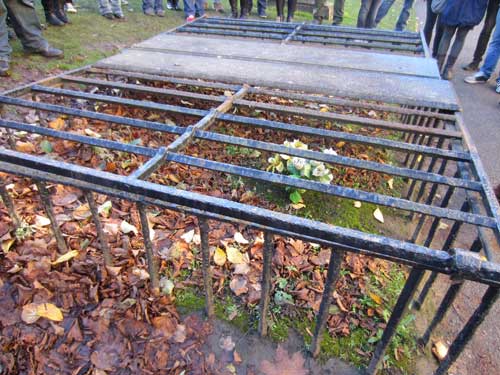
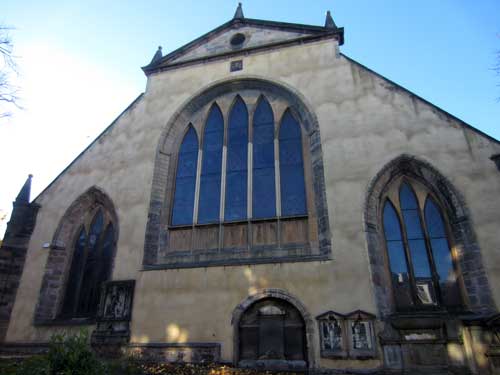
Just outside the cemetery was another gravestone... dedicated to a dog. The story goes as such: John Grey was a night watchman in a bad part of town. So got dog for protection. However, no one was scared of Bobby, the small terrier... instead he became very well liked. In 1858, John died. Bobby followed the coffin and then sat by grave. He stayed there for 14 years. Then someone made a law against stray animals in cemeteries. So the city council figured out how to make Bobby an exception... they made him a citizen. They even gave him a key to the city (called a freedom key). So no longer was he a stray but an actual citizen of Edinburgh. He technically could vote before women could. But when he died, the church wouldn't allow him buried here. So instead there is just an honorary tombstone and a statue.

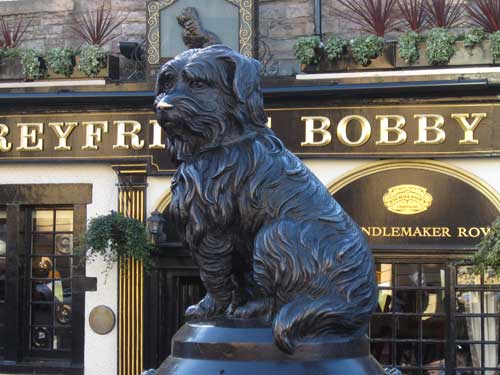
The statue is life-sized. Note his nose is rubbed shiny from all the people petting him!
We passed by The Elephant House Cafe back to Parliament Square (west).
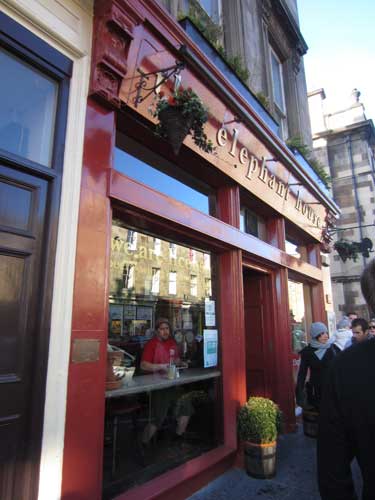
This is the cafe where JK Rawlings started her Harry Potter series.

More unicorns
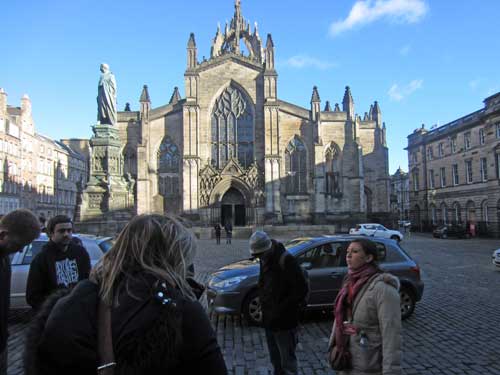
Back at Parliament Square
We sat on some steps while we heard one final story about Deacon Brodie.
In the 1700's, Brodie was a locksmith, a cabinet maker and a gallows maker. He was also a drinker, a gambler and enjoyed a lot of mistresses. His vices required money... and since he conveniently had access to every key in the city, the answer was obvious for him. By day he was a highly respected citizen; by night he was a busy thief.
The town citizens were frustrated and confused about all the robberies. After several weeks, they put together a special committee in order to catch the culprit. And who did they nominate as head of the committee? Yup, Brodie. So now he is actually getting paid to catch himself! But he stalled and procrastinated (since clearly he was enjoying his lucrative position) and eventually people began to get impatient. So he plans one final heist. He hires three guys to rob the tax office. They are caught but don't talk, thinking they will blackmail him. But Brodie flees to Amsterdam. His plan is to sail overseas and begin a new life. Unfortunately he sends a letter to one of his mistresses, asking her to come join him. But she turns the letter into the local authorities who catch Brodie easily because he has listed a return address They drag him back here and in 1778, he was hanged on one of his very own gallows.
While the story of isn't exactly Jekyll and Hyde, Brodie was Robert Louis Stevenson's inspiration with his split day/night personality.
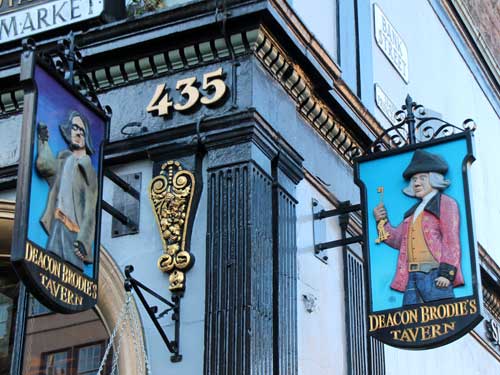
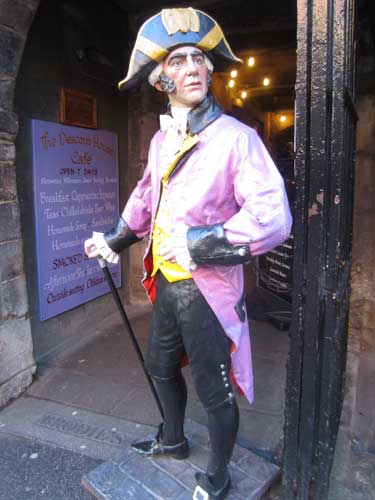
We then took one last group photo and parted ways.

Say "freezing cold!!"
During the tour I had talked a bit with Sebastian, a college student from Munich, Germany. He also hadn't toured the castle yet so we decided to do so together. We walked back up the Royal Mile and paid our quite pricey entrance fee (they didn't even give him a student discount). We didn't really have an agenda so just wandered around a bit aimlessly. There were many great exhibits to explore as well.
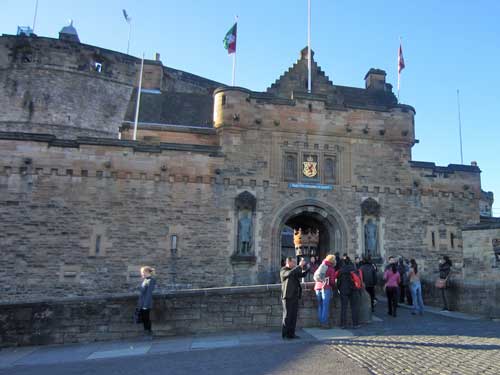
Entering the castle
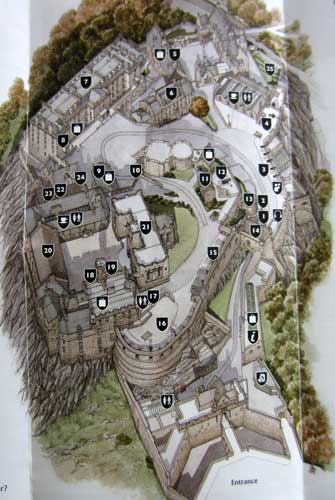
click for a larger version

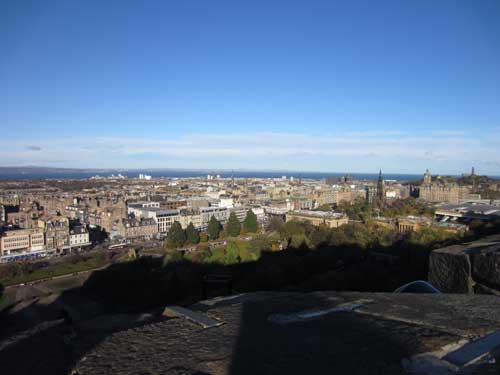
The amazing view
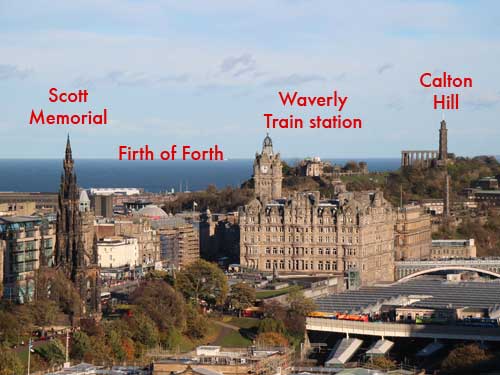

The Firth of Forth is the estuary (or firth) of the River Forth. Technically it is a fjord, formed during the last glacial period.
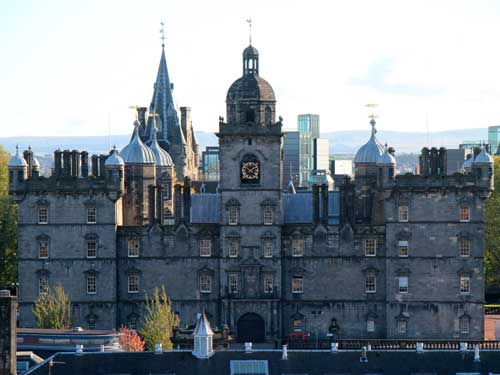
"Hogwarts"

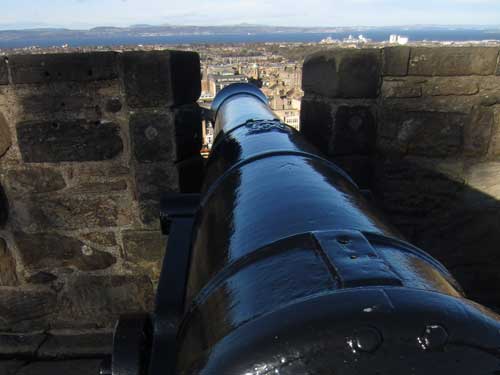

One O'clock Gun is fired everyday at 1 pm (except of course on Sundays... the one day I am here). The first gun was fired in 1861 to provide an audible time signal for ships in the port of Leith.
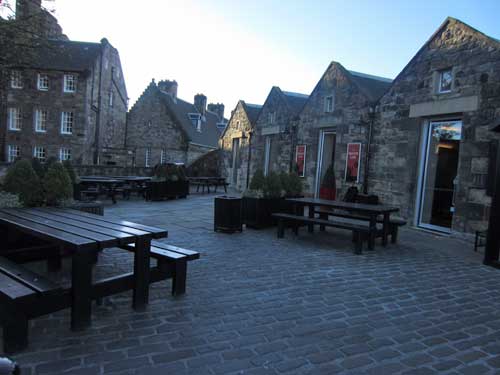
Making our way deeper into the castle
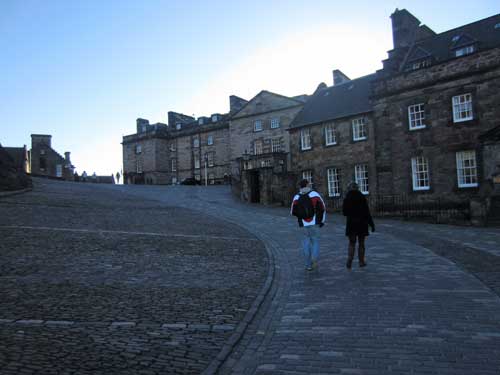
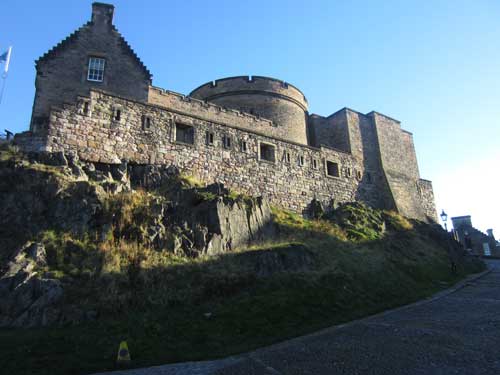
The stronghold
